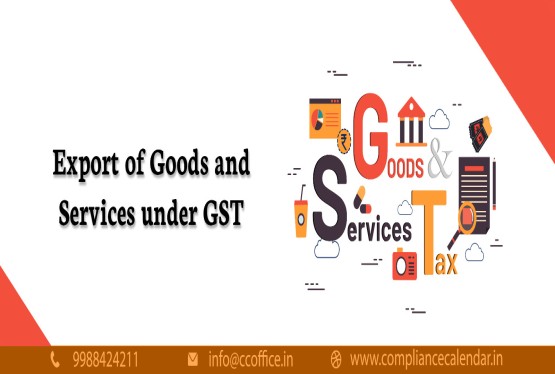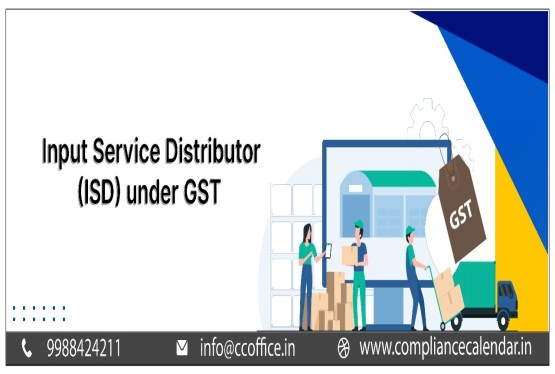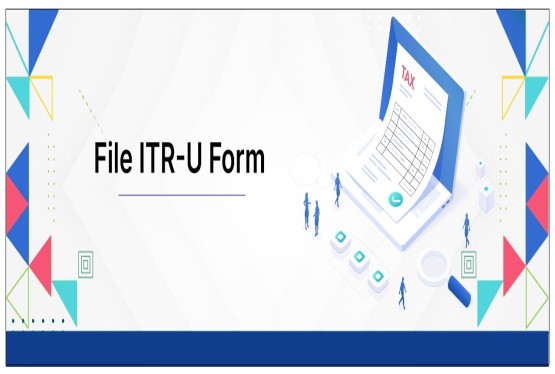The Goods and Services Tax (GST) has significantly streamlined India’s indirect tax framework since its introduction in 2017. It replaced a complex system of multiple taxes with a unified tax structure, simplifying tax compliance for businesses. GST registration is mandatory for businesses that meet certain turnover thresholds or are engaged in specific types of transactions. However, there are scenarios where businesses might need to surrender their GST registration due to various operational or strategic reasons.
This article provides a detailed overview of the surrender of GST registration in India in 2025, explaining the reasons for cancellation, the required documentation, and the potential impacts on businesses. It also highlights how surrendering GST registration affects businesses registered under schemes like LLP registration and Startup India Registration.
What is GST Registration?
GST registration is a legal requirement for businesses that exceed a certain turnover threshold or are involved in specific transactions like interstate supply, e-commerce, or import-export activities. It allows businesses to collect GST from customers and claim Input Tax Credit (ITC) on their purchases. For many businesses, especially those registered as Limited Liability Partnerships (LLPs) or under Startup India Registration, GST registration adds credibility and opens doors to government tenders, funding, and other business opportunities.
However, if a business undergoes changes in structure, scale, or operations, it may choose to surrender its GST registration. This is a formal process where the business applies to cancel its GST number, ceasing its obligations to collect GST or file returns.
Reasons for Surrendering GST Registration
Businesses might decide to surrender their GST registration for several reasons. These can be voluntary or mandated by changes in business operations or legal structures.
1. Closure of Business Operations: When a business permanently shuts down, there is no need to maintain an active GST registration. This is common in cases where startups, despite being recognized under Startup India Registration, fail to scale or sustain their operations.
2. Reduction in Turnover Below Threshold Limit: Businesses that experience a drop in turnover below the mandatory GST registration threshold (Rs.40 lakh for goods suppliers and Rs.20 lakh for service providers) can opt to surrender their registration. For example, an LLP initially registered for GST due to high turnover might cancel its registration if the turnover drops significantly.
3. Change in Business Structure: Businesses that undergo structural changes, such as converting from a sole proprietorship to an LLP or from an LLP to a private limited company, need to surrender their existing GST registration and apply for a new one under the new structure. Similarly, businesses registered under Startup India Registration that evolve into larger entities might need to restructure their GST compliance.
4. Merger, Acquisition, or Amalgamation: In cases where a business is merged or acquired by another entity, the existing GST registration must be surrendered, and the new entity must apply for a fresh GST registration.
5. Switching to Composition Scheme: Businesses opting for the GST Composition Scheme for simplified tax compliance need to cancel their regular GST registration and register under the composition scheme instead.
6. Death of Sole Proprietor: In the unfortunate event of the death of a sole proprietor, the legal heirs may choose to either surrender the GST registration or transfer it if they decide to continue the business.
7. Discontinuation of Taxable Supplies: If a business decides to stop supplying taxable goods or services, it may voluntarily surrender its GST registration.
Process for Surrendering GST Registration
The process of surrendering GST registration is designed to be straightforward and is primarily conducted online through the GST portal. The procedure varies slightly depending on whether the cancellation is voluntary or initiated by the tax authorities.
1. Log in to the GST Portal: Visit the official GST portal (www.gst.gov.in) and log in using your credentials associated with the business’s GST registration.
2. Direct to the Cancellation Form: Go to the Services tab, select Registration, and then choose Application for Cancellation of Registration.
3. Fill Out the Application Form: The form requires the following details:
-
Reason for cancellation (e.g., business closure, change in structure, turnover below threshold).
-
Date from which the cancellation should be effective.
-
Details of stock held on the date of cancellation, including inputs, semi-finished goods, and finished goods.
-
Information on any pending tax liabilities or credits.
4. Upload Supporting Documents: Attach the necessary documents to substantiate your application for GST cancellation (discussed in the next section).
5. Verify and Submit the Application: Use a Digital Signature Certificate (DSC) or Electronic Verification Code (EVC) to verify and submit the application.
6. Acknowledgment and Approval: After submission, you will receive an Application Reference Number (ARN) to track your application. The GST authorities will review the application, and if everything is in order, they will issue a cancellation order.
Documents Required for Surrendering GST Registration
Submitting the correct documents is essential to ensure a smooth cancellation process. The documentation required depends on the reason for surrendering the GST registration.
1. Proof of Business Closure: For businesses closing permanently, submit documents like:
-
Dissolution deed (for partnerships or LLPs).
-
Board resolution (for companies).
-
Cancellation of licenses, leases, or contracts.
2. LLP Registration or Incorporation Documents: If the business is undergoing structural changes, provide the LLP registration certificate or the incorporation documents of the new business entity.
3. Proof of Reduced Turnover: When surrendering GST due to turnover falling below the threshold, submit audited financial statements, income tax returns, or bank statements showing the reduced income.
4. Merger or Acquisition Documents: In the case of mergers or acquisitions, provide legal documents such as the merger agreement or court orders validating the transaction.
5. Final GST Returns (GSTR-10): Before the GST registration is canceled, businesses must file GSTR-10, a final return summarizing the tax liabilities up to the date of cancellation.
6. Declaration of No Pending Liabilities: A self-declaration stating that all tax dues, penalties, and refunds have been settled.
7. Death Certificate: If the GST cancellation is due to the death of the sole proprietor, submit the death certificate and legal heir documentation if applicable.
Impact of Surrendering GST Registration
While surrendering GST registration may be necessary under certain circumstances, it carries several implications for businesses, both operationally and financially.
1. Ineligibility for Input Tax Credit (ITC): Once the GST registration is canceled, the business can no longer claim Input Tax Credit on purchases. This can increase operational costs, particularly for businesses that continue to operate but without GST registration.
2. Loss of Business Opportunities: Many government contracts, tenders, and partnerships require an active GST registration. Businesses registered under Startup India Registration or listed on the Government e-Marketplace (GeM) may lose access to these opportunities if they surrender their GST registration.
3. Impact on Credibility: Having an active GST registration adds credibility, particularly in B2B transactions. Surrendering GST registration might signal reduced business activity, which could affect partnerships and customer trust.
4. Restrictions on Issuing Tax Invoices: After cancellation, the business cannot issue GST-compliant tax invoices or collect GST from customers. This may restrict dealings with other GST-registered entities.
5. Requirement to Clear Liabilities: Before the GST registration is officially canceled, all outstanding tax liabilities must be cleared. Any unpaid taxes, penalties, or interest must be settled, and failure to do so can lead to legal consequences.
Conclusion
The surrender of GST registration in India is a formal process that businesses may need to undertake for various reasons, such as business closure, structural changes like LLP registration, or turnover reductions. While the process is straightforward, it requires careful documentation and a thorough understanding of the implications.
Businesses should ensure that all outstanding liabilities are cleared before initiating the cancellation process. Moreover, they should consider the impact on operations, partnerships, and government schemes like Startup India Registration and the Government e-Marketplace before surrendering their GST registration. Consulting with tax professionals or legal advisors can help direct the complexities and ensure a smooth transition, enabling businesses to remain compliant while adapting to their evolving needs.
Frequently Asked Questions
Q1. Who can surrender GST registration in India in 2025?
Ans. Any registered taxpayer, including businesses, LLPs, and startups, can surrender their GST registration if they meet specific conditions like business closure or reduced turnover.
Q2. What documents are required to surrender GST registration?
Ans. Required documents include proof of business closure, final GST returns (GSTR-10), LLP registration certificates (if applicable), and a declaration of no pending liabilities.
Q3. How long does it take to process GST registration surrender?
Ans. The GST surrender process typically takes 15-30 days after submission, depending on document verification and clearance of outstanding liabilities.
Q4. Do I need to file any returns before surrendering GST registration?
Ans. Yes, you must file a final return, GSTR-10, within three months of applying for GST cancellation to settle any pending tax obligations.
Q5. What happens after my GST registration is surrendered?
Ans. Once surrendered, you can no longer collect GST, issue tax invoices, or claim input tax credit, and your business will be removed from the GST registry.












_crop10_thumb.jpg)

















































































_for_FY_2025-26_crop10_thumb.jpg)












_learn_crop10_thumb.jpg)








_Filing_Due_Dates_for_FY_2024-25_learn_crop10_thumb.jpeg)






















